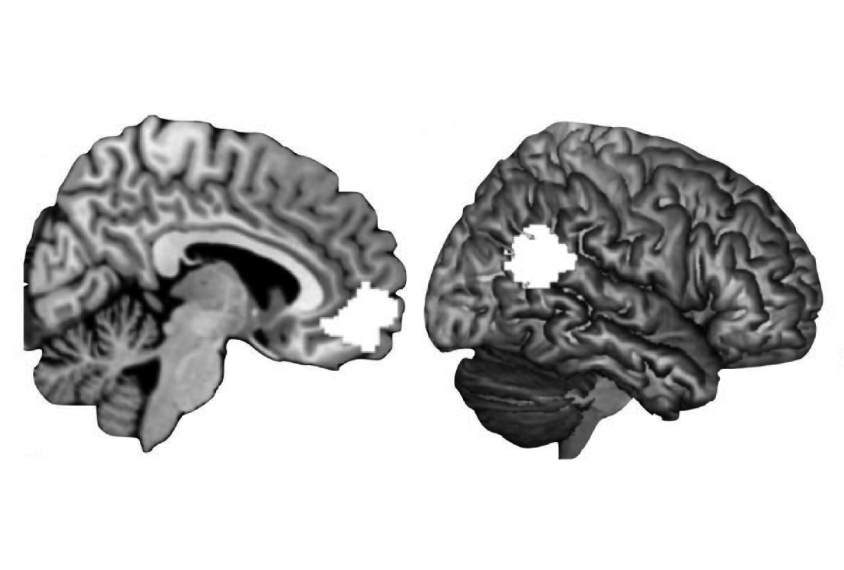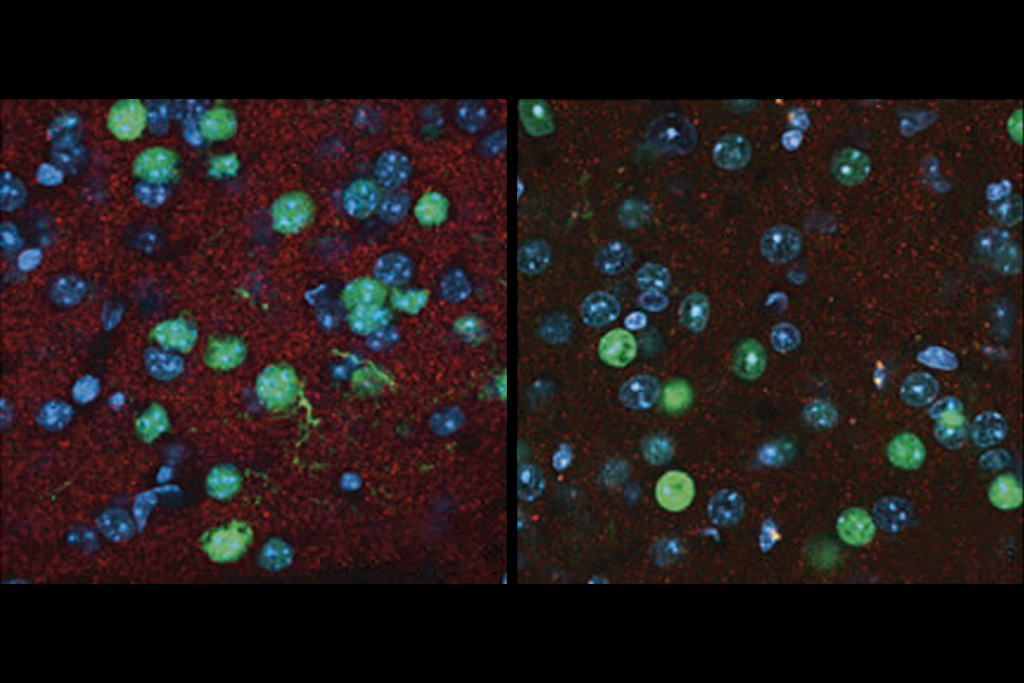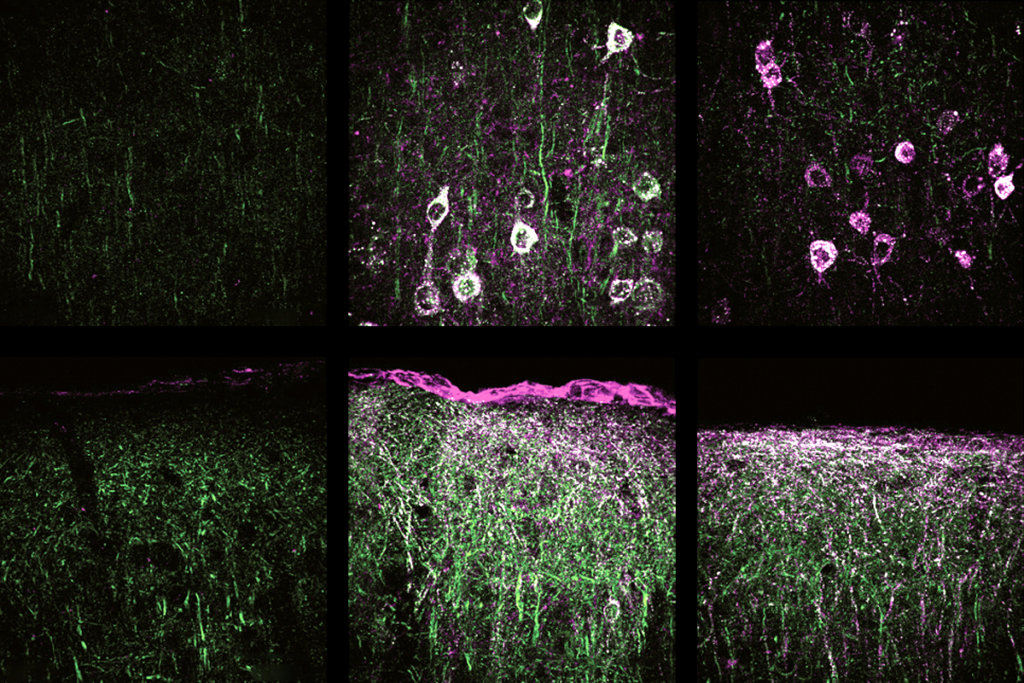
Sex differences in brain hint at roots of ‘camouflaging’ in autism
Autistic women’s activity in a ‘social’ brain region tracks with the extent to which they mask their autism.
Autistic women’s activity in a ‘social’ brain region tracks with the extent to which they mask their autism, according to a new study1.
Their activity in this and another social brain region when they reflect on themselves or others resembles that of their typical peers. Men with autism, by contrast, show less activity in these regions than typical men do.
The new findings reinforce the idea that autism manifests differently in women than it does in men.
“Maybe the idea of a hypoactivated social brain doesn’t apply universally to everyone on the spectrum,” says co-lead investigator Meng-Chuan Lai, assistant professor of psychiatry at the University of Toronto in Canada.
The findings represent the first attempt to pinpoint brain areas that may be involved when autistic women ‘camouflage,’ or mask their autism traits.
A related study describes a new tool that reliably measures camouflaging behaviors2.
“In order to answer important questions, like what capacities underpin camouflaging, why do people camouflage, and what are the consequences, we need to be able to measure camouflaging and how it varies between people,” says William Mandy, senior lecturer in clinical psychology at University College London, who led the tool’s development.
Thought–provoking:
Lai and his colleagues scanned the brains of 28 women with autism and 29 typical women while they answered questions about their own thoughts or physical appearance, and those of another person: Queen Elizabeth II3.
They looked at the activity of two ‘social’ brain regions, the ventromedial prefrontal cortex (vmPFC) and the right temporoparietal junction (RTPJ). These two areas are equally active in both groups of women.
In autistic men, both areas are less active than in controls. The researchers based this on data from a 2010 study that used the same paradigm to look at 29 men with autism and 33 controls.
“We really don’t know what leads to [these sex differences],” Lai says. “It may be related to their sex but also may be related to their experiences living with autism.”
The researchers then explored how social brain function may relate to the ability to camouflage.
They compared their findings with data from a 2017 study that measured camouflaging in the same men and women4. In that study, they quantified camouflaging by comparing the participants’ scores on an autism diagnostic test with those on a self-report survey of autism traits, as well as a test in which they try to deduce emotions from pictures of eyes.
Among the autistic women, higher camouflaging scores track with greater brain activity in the vmPFC during self-reflection. Men’s camouflaging scores show no such link. Camouflaging does not relate to brain activity in the RTPJ in either sex. Researchers reported the findings 24 October in Autism.
The results suggest that the extent to which a person reflects on their own thoughts is associated with the extent to which they mask their autism, Lai says.
The findings need to be replicated in a larger sample. Activity in other brain areas may also underlie camouflaging, says Kajsa Igelström, assistant professor of neuroscience at Linköping University in Sweden, who was not involved in the work.
“It’s not all about social behaviors,” Igelström says. “Camouflaging may involve many other functions, such as top-down attention and executive function, and those networks would be really interesting to study.”
Masking measure:
In the second study, Lai and Mandy collaborated to build a 25-item test to quantify camouflaging.
They generated questions about camouflaging behaviors based on how 92 autistic adults described their own experiences5. The behaviors involve compensating for social difficulties, masking or hiding autistic traits, or otherwise trying to ‘fit in.’
The researchers gave the test, called the Camouflaging Autistic Traits Questionnaire, or CAT-Q, to 832 women and men, including 354 with autism. The participants also completed questionnaires about autism traits, social anxiety and other behaviors related to the condition.
Autistic adults scored higher on the CAT-Q, as a group, than controls. And the participants with high scores also show high levels of autistic traits and mental-health difficulties. Researchers reported the results 25 October in the Journal of Autism and Developmental Disorders.
The researchers demonstrated the reliability of the test by retesting 30 of the participants three months later: The scores remained stable. They also confirmed its validity — for example, by finding that individuals respond to questions that are related in consistent ways.
Validating the questionnaire in children is an important next step, experts say.
“It is really a pity that there is no child or adolescent version, as the social camouflaging especially might drive late [autism] diagnoses,” says Sven Bölte, professor of child and adolescent psychiatric science at the Karolinska Institutet in Stockholm, Sweden, who was not involved in the study.
The researchers are testing the questionnaire in adolescents. They are also trying to identify cognitive factors related to camouflaging and to determine how the behavior relates to mental-health problems. Ultimately, Mandy says, they would like to use the questionnaire to better understand the benefits and drawbacks of camouflaging, and whether it is unique to people with autism.
References:
Recommended reading

SHANK3 deficiency and behavior in mice; and more

Autism scientists push back on CDC’s inaccurate vaccine claims

Gene replacement therapy normalizes some traits in SYNGAP1 model mice
Explore more from The Transmitter

The spectrum goes multidimensional in search of autism subtypes

